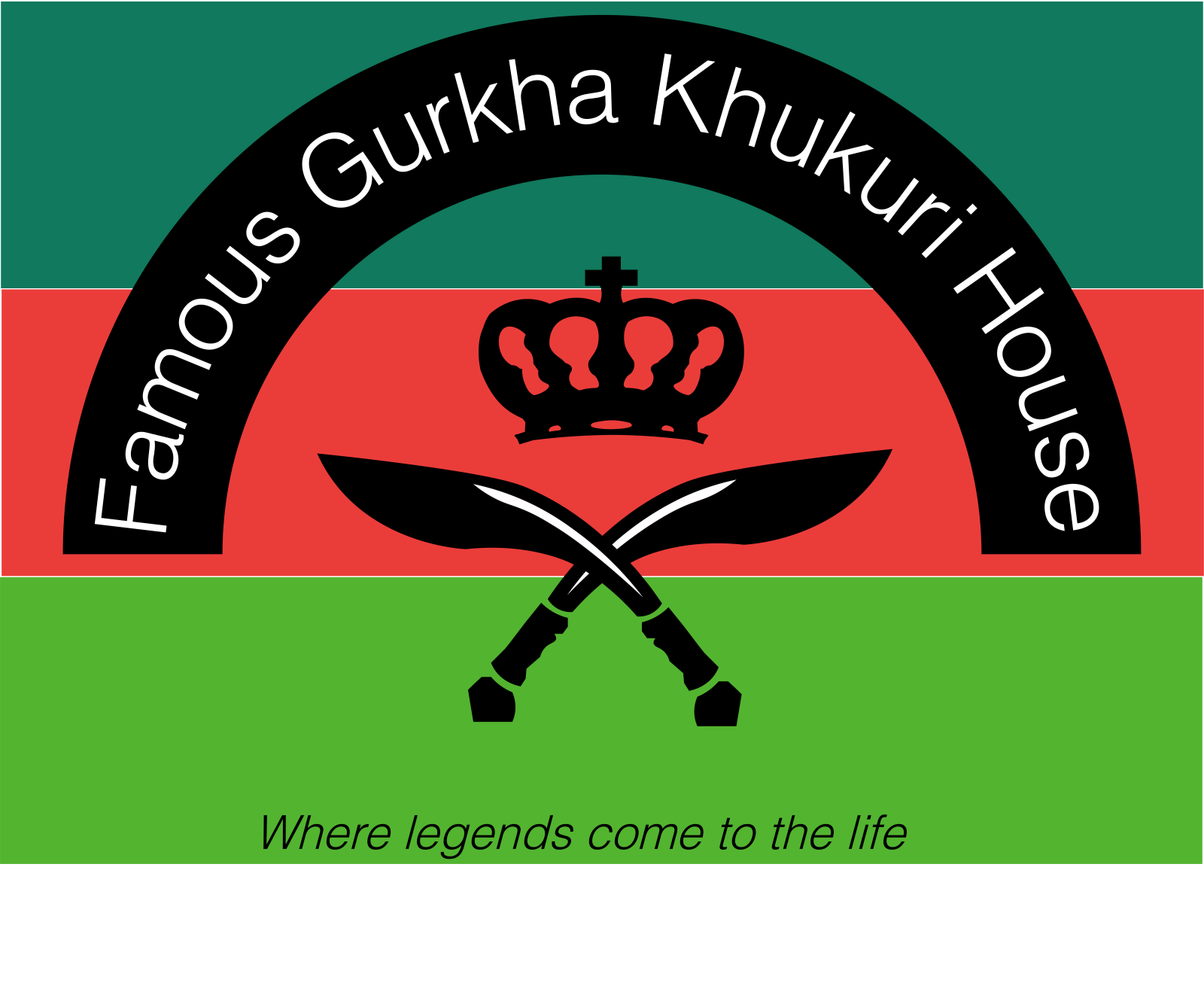About The Gurkha Khukuri: Preserving Nepal's Blade Crafting Heritage
At The Gurkha Khukuri, we bring you the essence of Nepal through blades steeped in centuries of tradition, craftsmanship, and purpose. Founded to preserve and celebrate the legacy of Gurkha warriors, our shop specializes in premium hand-forged Khukuris, superior Damascus knives, and curated Gurkha blade collections all crafted by master Kami blacksmiths using high-grade materials in the heart of Nepal.

Our Craftsmanship & Product Range
Every blade at The Gurkha Khukuri is a tribute to centuries-old artisanal skill. We use high-quality 5160 spring carbon steel, transformed through hand forging and precise heat treatment to deliver optimal performance and durability. Each Khukuri features:
- Thick spine tapering to a razor-sharp tip designed for powerful chopping and slicing.
- Full-tang construction with traditional hardwood or rosewood handles, secured with Himalayan laka resin for stability and comfort.
- Leather-wrapped scabbards housing both a karda (utility knife) and chakmak (sharpening steel), preserving functionality and cultural authenticity.
Explore our Damascus Knife collection, Swords and Gurkha Khukuri selection to discover tools for survival, outdoor adventure, ceremonial use, and historical appreciation.
Our Heritage & Mission
The Khukuri also called the Gurkha knife or Kukri has been the national blade of Nepal and a symbol of Gurkha valor since at least the 14th century. It gained legendary battlefield fame during the Anglo-Nepalese War (1814–16), where Gurkha warriors demonstrated incredible bravery against British forces.
Its distinctive inward-curved blade, known as the "kukri bend," provides exceptional chopping power in both combat and daily utility. This design has been perfected over centuries to create the perfect balance between a tool and a weapon.
The Gurkhas' fierce reputation whether fighting under the Gorkhali flag in the unification of Nepal led by Prithvi Narayan Shah in the 18th century, or later serving in the British and Indian armies propelled the Khukuri onto the global stage.
Our mission is to extend this legacy by offering authentic, handcrafted blades that honor Gurkha heritage while empowering adventurers, collectors, and enthusiasts worldwide. Each purchase supports traditional Nepalese craftsmanship and helps preserve this ancient art form.
Services & Customer Commitment
- Customized Blades: Personalized engravings, tailored handle materials, and full-tang modifications designed to your specifications.
- Restoration & Sharpening: Professional maintenance services to preserve edge quality, sheath integrity, and blade condition.
- Global Shipping & Support: Secure international delivery with customs guidance and 24/7 customer support.
- Community & Education: In-depth guides on Khukuri usage, care, sharpening tips, and cultural context to help you appreciate every feature and tradition behind the blade.
Got questions? Visit our FAQ section or contact our team for assistance with choosing the right Gurkha knife or placing a custom order.
Why Choose The Gurkha Khukuri?
- Authentic Materials: High-grade 5160 carbon steel & traditional wood/biological handles sourced directly from Nepal.
- Proven Heritage: Inspired by Gurkha history from hill warriors to modern defenders. Explore our signature collection.
- Multi-Use Utility: Ideal for chopping, survival, bushcraft, battlefield use, and collector display.
- Craft & Community: We partner with skilled artisans in Nepal. Every purchase supports cultural preservation and community based fair trade practices.
- Lifetime Guarantee: Confidence in every blade with our commitment to quality and customer satisfaction.
Experience the Gurkha Legacy
Carry forward the spirit of the Gurkha legacy with a blade that represents centuries of tradition, craftsmanship, and valor. Explore our collections today and join our mission to keep this legendary blade-making tradition alive.
Discover the power, story, and precision of a true Nepali Khukuri where history meets craftsmanship in every blade.
If you are blade lover and looking to expand your blade collection? Pair your collection with our Gurkha Kukri Knives for chopping power, explore our Swords Collection for collectors, or check out our Damascus Knives for unmatched craftsmanship.
Owning this Hand-Forged Kukri Knife is more than just having a tool it’s holding a piece of Nepalese warrior tradition. The kukri has long been associated with the bravery of the Gurkhas, legendary soldiers known worldwide for their loyalty and courage. If you’re fascinated by their stories, don’t miss our blog on the brave and loyal Gurkha warriors and the incredible tale of Bishnu Shrestha, who fought off 40 Taliban soldiers with only his sword. These real stories of heroism show why the kukri is not just a blade, but a symbol of strength, honor, and resilience.
Want expert tips? Don’t miss our Blade Care Guide and our popular article on Choosing the Right Kukri.




